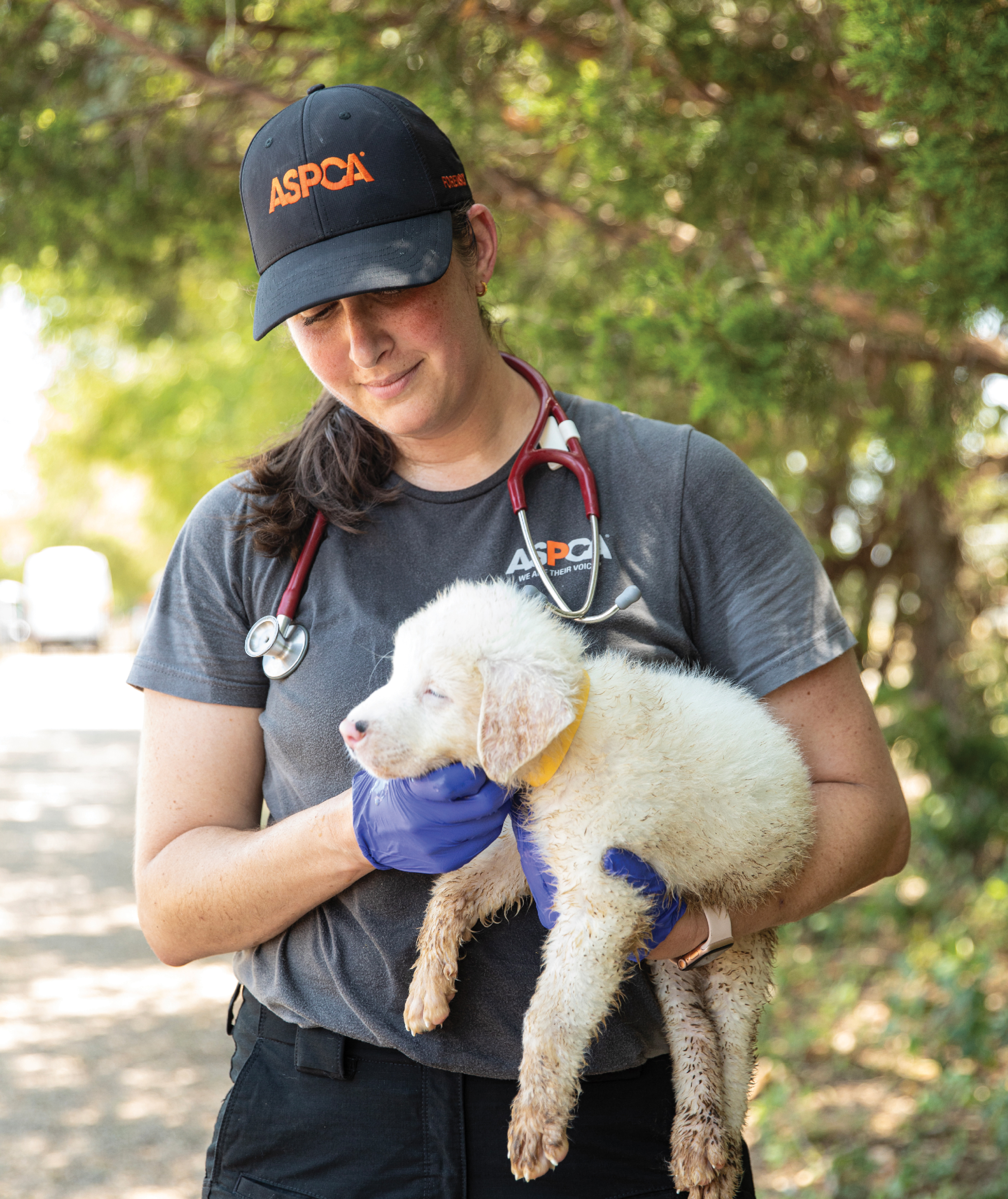Animal abuse and domestic violence can go hand in hand

Elizabeth Pearlman is a forensic veterinarian for the American Society for the Prevention of Cruelty to Animals, investigating crimes commited against animals. There is a growing movement to examine the link between such crimes and domestic violence. (Photo courtesy of ASPCA)
On Easter morning last year, Daquantae Lamar Johnson and his girlfriend argued in their Flint, Michigan, home over what they should eat for breakfast. The fight escalated and Johnson became violent, pistol-whipping and raping her.
She turned on her phone’s camera, filming as she headed out the window, bringing Blue, her beloved pit bull, with her. After a chase, Johnson shot and killed the dog. He then assaulted his girlfriend again.
What happened between Johnson, his girlfriend and her pet is a violence dynamic that is gaining more scrutiny in the criminal justice system. For years, studies have shown the connection between violence toward people and violence toward animals. Now, there is increased momentum to train judges, lawyers and child protective investigators to recognize “The Link.”
“The tide is definitely changing on the perception of the importance of investigating animal cruelty,” says Martha Smith-Blackmore, president of Forensic Veterinary Investigations in Boston. “Crimes against animals do not exist in a vacuum.”
Related article: Vet Detectives: Forensic veterinarians help examine beastly crimes
Typically, animal abuse is a means to manipulate intimate partners, experts say. One early study found pet abuse occurred in 88% of the families under supervision for physical abuse of their children.
“The common thread is the power and control,” says Phil Arkow, the Etowah, North Carolina-based president of the National Link Coalition, which is focused on the connection between animal abuse and domestic violence. “About 50% of abused women won’t leave the situation out of fear for what will happen to their animals if they leave.”
Coercive control
Investigators need to look at the totality of a crime scene, says Madeline Bernstein, president of the Society for the Prevention of Cruelty to Animals Los Angeles and a former prosecutor who now trains attorneys and members of law enforcement. “You might have an abused bunny and murdered child and a beaten-up wife,” she says. “Animal abuse is often found at the same time because very often, it’s a means of coercive control—‘If you don’t come home, I’ll microwave your cat.’”
Abuse victims frequently are not asked about the treatment of their pets. Training with the National Council of Juvenile and Family Court Judges helped Alena Clark, an assistant attorney general for the Michigan Department of Attorney General, start questioning if the pets were abused.
“You would be shocked [by] the number of times that they would say yes,” Clark says. “Survivors of this crime often don’t have anyone else, so these pets become particularly important—and the batterer knows that. So they use that as a form of control.”
But animal cruelty and domestic abuse often are investigated by different agencies.
“Lack of interagency relationships and collaboration can sometimes be a hindrance to that kind of natural dot-connecting,” says Maya Gupta, who is senior director of research at the American Society for the Prevention of Cruelty to Animals and based in Woodstock, Georgia.
Since 2010, law enforcement in Glendale, Arizona, has used a standardized threat assessment form in suspected intimate partner violence cases. It includes a question about threats to and abuse of pets, says Elizabeth Finn, retired presiding judge and a member of the ABA Judicial Division’s National Conference of Specialized Court Judges. A judge can, in a civil protection order, grant stay-away orders and the custody of animals.
Motivated to press charges
Violence against an animal can bring additional charges, and sometimes it’s the harm to a beloved pet that motivates the human victim to press charges against an abuser.
Bernstein, who is also a member of the ABA Tort Trial and Insurance Practice Section, remembers a client who repeatedly came into intake with new injuries—including broken bones and gunshot wounds—but would drop charges against her abuser.
“One day, he pulled the plug on her fish tank and killed all the fish,” Bernstein says, “and then she wanted the death penalty.”
Sometimes, animals are abused in front of kids, says Margaret Drew, a UMass Law associate professor and special advisor to the ABA Commission on Domestic & Sexual Violence. “That keeps the children under the abuser’s control as well.”
The intimidated children then often stay quiet about the abuse they endure during shelter hearings and investigations, says retired 11th Judicial Circuit Judge Rosa Figarola, who received training about The Link from the National Council of Juvenile and Family Court Judges.
But if kids are asked about their dog—where it sleeps, who feeds it, how it is treated when it has an accident—often they will connect how the animal is treated to the abuse they are receiving, she says.
“That can be a doorway into piercing the veil to find out what’s going on in a family,” Figarola says.
Overall, training for attorneys and law enforcement emphasizes treating animal cases like crimes, using best practices for investigation and building a case, Bernstein says.
“Let me show you how you can already use crimes that you are familiar with to help bolster the animal cruelty case,” she says. “And then the animal cruelty case part of it is gravy.”



